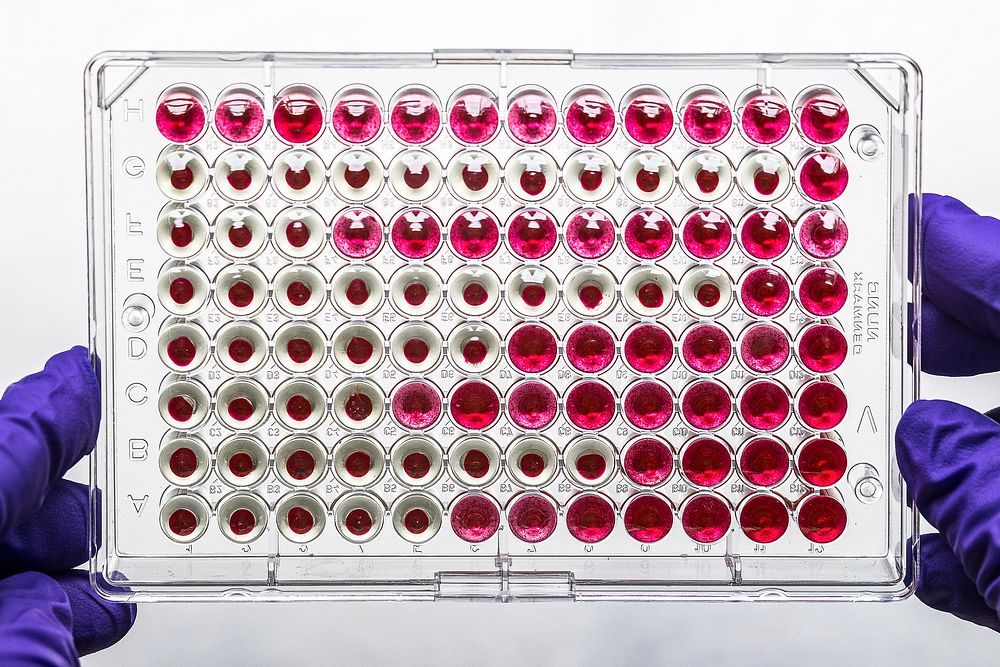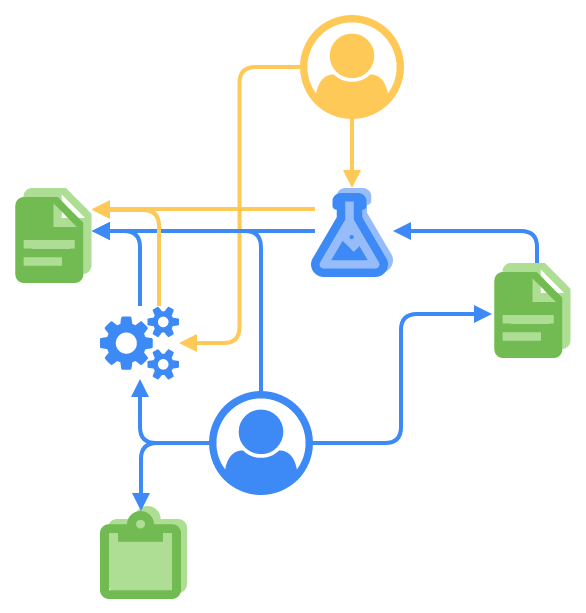The pharmaceutical industry faces a dilemma every day. On the one hand, the overall success of the industry relies on painstakingly thorough R&D, testing, and trials that, ironically, eliminate the vast majority of product ideas and eventually yield a relatively small number of safe and effective products. However, the research, development, lab testing, and clinical trials necessary to get a new product to market are hugely expensive.
In 2017, Scott Gottlieb told the members of the Regulatory Affairs Professional Society (RAPS):
“
We’re on an unsustainable path, where the cost of drug development is growing enormously . . . We need to . . . make the entire process less costly and more efficient. Otherwise, we won’t continue to realize the practical benefits of advances in science, in the form of new and better medicines.”
– Scott Gottlieb,
Former FDA Commissioner
The challenge for pharmaceutical companies is to discover ways to make product development less expensive without making it less effective – to learn how to work more productively without sacrificing accuracy or precision.
A leading-edge ELN (Electronic Laboratory Notebook) designed for use by pharmaceuticals helps companies achieve both of these goals.
Are you skeptical? Read on to discover:
- Why do pharmaceutical labs need an ELN?
- What characteristics make an ELN robust and user-friendly?
- How to approach the implementation of your ELN for maximum efficiency and acceptance.
How an ELN Helps Labs Increase Productivity & Reduce Costs
Before we address how an ELN helps labs increase productivity and reduce costs, let’s define what an ELN is and how it differs from a LIMS (Laboratory Information Management System).
Put simply, an ELN is a digital version of the ubiquitous traditional lab notebook used for hundreds of years by researchers in many fields. Like a paper notebook, an ELN documents thousands of details about lab activity: Who did what? When, where, how, and why did they do it? What happened?
Notice the level of detail suggested by these questions, and how specific they are to an individual lab. That’s a key feature of an ELN; it’s designed to manage unstructured data and adapt to changing workflows. That feature is also a critical difference between an ELN and a LIMS.
A LIMS is designed to manage structured data through workflows that are tightly regulated. Traditionally, LIMS data gathering and management has focused on capturing and analyzing data throughout the lifecycle of the sample. Implementing a LIMS increases the lab’s standardization and accuracy among samples and tests, and also guides and records the usage, maintenance, operation, and calibration of equipment.
There’s disagreement over whether a leading-edge lab should implement an ELN, a LIMS, or a combination of the two. (We will address that issue later.) For now, we’ll focus on the ELN.
Why – exactly – does a pharmaceutical lab need an ELN?
We’re not here to malign the efficacy of the tried-and-true paper notebook. However, consider the limitations of paper notebooks when it comes to:
- Locating data from an experiment performed 5 (or 10 or 15) years ago
Sorting through piles of notebooks until you locate the correct one and then scrutinizing each page until you find the data you need is tedious and time-consuming. Sometimes your effort is wasted. A recent study estimates that 17% of all data is lost.
- Continuing with a project when the colleague with the crucial data gets critically injured or ill
Unless that person has a way to hand things over, the project grinds to a halt until he or she returns.
- Replicating research when a person is no longer employed by the firm
Sometimes, the research walks out the door with the researcher. Even if the research remains, the lab faces the difficulty of locating and accessing it.
An ELN eliminates these difficulties associated with paper notebooks and provides researchers with tools and integration that a paper notebook just can’t provide. For those reasons, an ELN is crucial for cutting-edge pharmaceutical labs. Specifically, an ELN provides:
- Enhanced data creation
An ELN covers all aspects of data entry, including who generated the data and what materials/resources and machines/instruments were used. E-signatures and time stamps explain when the analyst performed the testing. Automated calculations yield fewer math errors, greater precision, and significant time efficiencies. Simply put, an ELN helps researchers generate more accurate data faster. This means increased productivity and efficiency.
An ELN also makes errors easier to spot. Since data ranges can be specified, results outside the range are instantly flagged and can be quickly analyzed to discover the cause of the discrepancy. This capability helps researchers notice errors of transposition or substitution and prevents a domino effect of incorrect calculations driven by a single error.
- Improved sample preparation
Complex sample formulations are often automated for greater measurement accuracy. A robust ELN links the equipment, instruments, and resources used in the sampling process to the data derived from each sample. Preparation documents are detailed, easier to complete, and legible (There’s no more need to decipher someone’s handwriting.)
- Easier data retrieval
An ELN’s search function lets you access data from a specific experiment that was performed by a certain researcher and yielded results that meet exact parameters. Thanks to layers of search functionality, the most robust ELNs can pinpoint and display–in just a few seconds–the exact data needed. (You can say goodbye to trips to the vault in the basement!)
- A balanced approach to data protection and data sharing
Giving the right people access to data increases communication and the flow of ideas. It speeds the research process and encourages camaraderie and a shared sense of purpose. However, unbridled access can foster errors, clashes between researchers, compliance issues, and myriad situations that can put the integrity of the data at risk. An ELN lets you determine who can access what information. You specify the hierarchy of the project, stipulate who can use the data, and limit who can change the data. These features allow you to protect the data while you share it.
- Better lab stewardship
At the heart of lab stewardship is the desire to improve quality while reducing lab costs. An ELN helps labs increase their stewardship by streamlining activities, reducing redundancies, and increasing efficiency.
- Lab-wide Integration and Collaboration
This may be the biggest, overarching benefit. Integration reduces redundancies and the effects of human error while increasing communication and collaboration. Collaboration spawns ideas, generates teamwork, and enhances the work environment. Together, they facilitate lab-wide stewardship. Errors will still occur, but less frequently. And when they do, having an ELN in place makes them easier to spot and easier to correct.
With an ELN, all researchers can access the data they need, but no researcher should be able to access sensitive data without authorization. Layers of protection guard the data from unauthorized changes while electronic signatures and time/date stamps provide an audit trail.
Characteristics of a Robust and User-friendly ELN
You’ve decided that an ELN makes sense for your lab. Now you need to select an ELN that will serve you well today and into the future. What traits make an ELN powerful, adaptable, and easy to use?
- Spreadsheet functionality
Spreadsheet functionality tops our list of best traits for several reasons. One is that a spreadsheet makes data entry easier and aids data organization. Spreadsheets can be formatted to fit the work processes of the labs ensuring that Methods and SOPs are followed. It allows data to be sorted, placed into subsets, and stored as structured data for later use. With spreadsheets researchers can calculate statistics in seconds, plot points on a chart, and make graphs of sample results. Complex calculations and conditional statements can be coded into most spreadsheet programs. This allows them to be tailored to fit the needs of an individual lab.
A second benefit of spreadsheet-based ELNs is that they have been scientists’ “tool of choice” for decades now. Excel is now over 30 years old. It’s more dynamic than it used to be, but is essentially the same tool researchers have relied on for years. An ELN based on a spreadsheet feels ‘right’ to many researchers. That results in decreased training costs resulting from 1) greater acceptance among scientists who view a spreadsheet as a valued tool, and 2) easier and faster integration since that format is familiar.
- Simplicity
A strong notebook is a simple notebook in terms of how easy it is to understand and use on a daily basis. Simple notebooks are intuitive. They make it easy for researchers to take detailed notes (and locate them weeks or months later), to document equipment usage and calibration details, and to manage every aspect of the sampling process, from chemical inventory to sampling techniques.
- Compatibility
An ELN needs to integrate with all your lab’s other tools. To do this effectively, it needs an API (Application Programming Interface) layer that can communicate with them. The usefulness of an ELN drops greatly if it requires you to “retool” all the other systems in order to implement it fully.
- Compliance orientation
Pharmaceutical labs that develop, patent, and market medical drugs must meet rigorous standards concerning lab protocols and practices. So, it’s essential that an ELN aids compliance to the standards of GLP (Good Laboratory Practice) and to FDA Code of Federal Regulations Title 21 part 11, which addresses electronic recordkeeping systems specifically and sets parameters for audit trails and electronic signatures throughout the experiment.
Human actions ultimately determine whether a lab meets compliance standards. However, the software needs to meet technical requirements for compliance including a comprehensive and easy-to-follow audit trail and a framework that encourages lab-wide SOPs that meet compliance guidelines.
- Cloud-based storage
Cloud-based ELNs free labs from the expense of initial on-site setup costs and from ongoing administration and maintenance costs. They provide easy access to all data files since all the files are hosted in the same location. Employees working remotely or traveling internationally for business can access any data they need, as long as they have reliable internet access. An indirect – but significant – benefit of a cloud-based ELN is increased job satisfaction and productivity as a result of researchers’ ability to access, locate and use data in a few seconds.
The most common objection to a cloud-based solution is data integrity. However, a responsible ELN provider will secure your data with redundant server data and backups, and will also provide regular archives to you for local storage. This guarantees your data can not be lost and allows you to switch providers if needed without sacrificing data continuity.
How to Implement Your ELN Successfully and Efficiently
“Implementing an ELN occurs as a transition–not at a fixed point in time.” Key people in your transition team will need to repeat that saying to themselves and others during the process. You’ll facilitate the implementation if you:
- Expect some resistance
Among the researchers in your lab, you’re likely to encounter some or all of these objections to an ELN:
- “There’s no real need to change.” These people may admit that the current procedures lack in some ways, but they fail to see a pressing need to disrupt the status quo.
- “Our data won’t be secure, so all our work will be compromised.” This fear used to be more prevalent, but with increased levels of protection, has diminished, however, some scientists–especially those who meticulously follow data safety protocols and adhere to GLP –are still reluctant to trust an ELN.
- “An electronic system will add one more layer of difficulty to our work.” Laboratory science is a complex world of testing and discovery that demands attention to detail and intense focus. Some scientists worry that an ELN will add an unnecessary level of complexity that will muddle or derail their professional focus and lead to costly errors.
- “An electronic system is too expensive.” Each ELN is tailored to the lab that uses it. The cost varies based upon the number of users, the scale of the lab’s required services, and whether the ELN is hosted or located on-premise.
- Carefully choose the time you switch to an ELN
There will never be a perfect moment to switch from paper notebooks to an ELN. Research and experiments already in progress will be disrupted. Everyone’s productivity will dip briefly while he or she acclimates to the ELN. However, given the financial benefits of implementing an ELN, waiting for the perfect moment could be very costly, both in terms of the rate of getting new products to market and in additional ROI the lab could generate with an efficient ELN. Unless the lab is facing a crisis, the best time to transition to an ELN is probably now.
- Take full advantage of the support team supplied by the ELN provider
A good ELN provider will supply you with a support team during installation and transition. An excellent provider will make ongoing support available to you as part of their service. Having access to knowledgeable support personnel smooths the transition, calms the fears and doubts, and helps everyone adapt quicker.
How SciCord Provides a Powerful, Integrated Solution
SciCord is a spreadsheet-based hybrid ELN/LIMS that combines the compliance and structured aspects of a Laboratory Information Management System (LIMS) with the flexibility of an Electronic Laboratory Notebook (ELN). The ELN and LIMS functions integrate seamlessly and enable your company to quickly reap the benefits of enhanced data and time efficiencies as you continue to meet compliance standards and follow GLP.
Spreadsheets, Their Data, and Security
- Excel-based system with standard templates that can be adapted for your lab’s needs. New templates can be created by your lab personnel or by SciCord.
- Life-cycle-based program that records each step of each of your lab’s projects.
- To preserve data integrity, the document life cycle offers 3 levels of review – Self, Peer, or Peer Reviewer and Approver
- Audit history shows current and previous data as well as person and reason for change.
- Spreadsheet pages contain predefined calculations. Outlier data is automatically flagged.
- Documents and graphics can be added to the page or inserted as a separate page.
- Instruments can be linked directly to the page; reports can be permanently stored.
Document navigation and search
- Unique query function combines standard word/phrase search for Documents, Samples, and Resources
- Includes standard and customizable “Views” that can be filtered, sorted, ordered, named, and persisted for each user.
Asset management
- Records the location, ID, calibration details, expiration, and additional details of each asset.
- Assets can be linked via an interface connection.
- Includes resource usage details based on the Assets usage within the lab.
Work process
- Defines all sampling work to be done, including samples to be tested & results obtained.
- Flags and excludes equipment with out-of-date calibration
- Records details–such as location and expiration date–of all materials used.
- Logs inventory management details. Flags inventory that reaches critical levels.
- Guides each step of testing & records the sample prep, sample conditions, weights, etc.
- Provides a reviewable audit history by logging all measurement events
- Ability to take complex testing processes and simplify them in easy-to-follow steps, automatic calculations, and reporting.
- Work Requests generate tasks for lab personnel.
Creation of Permanent Records
- Template-based system saves time and reduces errors via automated calculations.
- Stores all sample results which can be queried. Specifications can be utilized.
- Instantly generates of Certificate of Analysis
- Compatible with visualization programs






Recent Comments